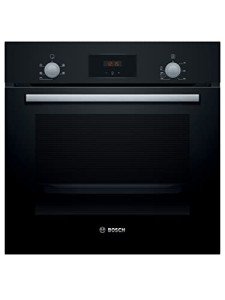The Ultimate Guide to Buying a Built-In Oven
In the world of modern cooking appliances, built-in ovens stand apart for their smooth integration into kitchen cabinets, visual appeal, and advanced cooking innovations. They supply a myriad of functions and a streamlined design, catering to both culinary lovers and everyday cooks. However, selecting the ideal built-in oven can be overwhelming offered the multitude of alternatives available in the market. This short article works as a comprehensive guide, highlighting crucial factors to consider when purchasing a built-in oven, popular features, and responses to regularly asked questions (FAQs).
Why Choose a Built-In Oven?
Built-in ovens provide various advantages, including:
- Space Efficiency: They are designed to fit into existing cabinets, optimizing kitchen space.
- Visual Appeal: With a variety of designs and surfaces, built-in ovens enhance the overall look of a kitchen.
- Advanced Features: Many come equipped with advanced technology, making cooking much easier and more precise.
- Personalization: Built-in ovens can be installed at eye level or listed below counter height, providing flexibility based upon personal choice.
Key Considerations When Buying a Built-In Oven
Here are very important factors to think about before purchasing:
1. Size and Dimensions
Before picking a built-in oven, it is important to measure the readily available space. Requirement built-in ovens typically fall under 2 primary categories:
| Oven Size | External Dimensions | Internal Capacity |
|---|---|---|
| Single | 24-30 inches large | 3-5 cubic feet |
| Double | 30-36 inches wide | 5-10 cubic feet |
Ensure that the picked design fits your kitchen cabinetry both in width and height.
2. Type of Oven
Built-in ovens been available in various types, including:
- Conventional Ovens: Uses heating components above and listed below for standard baking and roasting.
- Convection Ovens: Employs a fan to circulate hot air, providing even cooking.
- Wall Ovens: Installed vertically at eye level for simpler gain access to.
- Steam Ovens: Uses steam to prepare food, protecting nutrients and wetness.
3. Fuel Type
Built-in ovens are available in different fuel types:
- Electric: Often heats more evenly, ideal for baking.
- Gas: Offers instant temperature level control, excellent for roasting and broiling.
- Double Fuel: Combines the very best of both worlds with a gas cooktop and electric oven.
4. Features and Technology
Modern built-in ovens included a myriad of features that enhance the cooking experience:
- Smart Technology: WiFi-enabled designs enable users to manage the oven remotely by means of an app.
- Self-Cleaning: Reduces the effort required to keep a clean oven.
- Postpone Start: Lets you program the oven to begin cooking at a predetermined time.
- Numerous Cooking Modes: Options for baking, broiling, roasting, and more.
5. Brand name and Price
Selecting a reputable brand can ensure quality and reliability. Comparative pricing amongst different brands can assistant in decision-making. Here's a brief overview of popular brand names and their price varieties:
| Brand | Avg. Price Range | Noteworthy Features |
|---|---|---|
| Bosch | ₤ 1,000 - ₤ 3,000 | Streamlined design, trustworthy efficiency |
| Whirlpool | ₤ 800 - ₤ 2,500 | Easy to use controls |
| KitchenAid | ₤ 1,200 - ₤ 3,500 | Ingenious functions, stylish styles |
| GE Appliances | ₤ 900 - ₤ 2,800 | Range of sizes and choices |
Setup Considerations
Installation of a built-in oven is a key element that must not be ignored. It's highly advised to hire an expert when setting up a built-in oven. They can deal with electrical or gas line issues and guarantee that the oven is fitted safely in the kitchen cabinetry.
Maintenance Tips
Preserving a built-in oven is vital to prolong its life-span and efficiency.
- Clean Regularly: Wipe down surface areas and prevent letting spills become baked-on.
- Usage Appropriate Cookware: This prevents damage to interior surface areas and improves cooking efficiency.
- Inspect Seals: Inspect the door seals regularly for wear and tear to keep energy efficiency.
FAQs About Built-In Ovens
1. How do I understand which size built-in oven to buy?
Procedure the space you have readily available and compare it to the oven dimensions. Standard sizes typically range from 24 to 30 inches for single ovens.
2. Can I set up a built-in oven myself?
While it's possible to set up a built-in oven without professional help, working with a skilled technician is advised for safety, specifically with gas or electrical connections.
3. What is the average life expectancy of a built-in oven?
Usually, built-in ovens last about 10-15 years with proper maintenance.
4. Are built-in gas hobs and ovens built in ?
Energy effectiveness varies by model. Try to find energy rankings or environmentally friendly functions when selecting an oven.
5. Do built-in ovens require special cabinetry?
Yes, they are developed to fit particular cabinetry sizes. Ensure the cabinets is built to accommodate the wanted oven's dimensions.
A built-in oven is an outstanding investment that can considerably enhance your cooking experience and kitchen aesthetic. With different sizes, types, and advanced functions, comprehending your needs and preferences is important for making the best option. By thinking about dimensions, fuel type, and brand track record, you can with confidence pick a built-in oven customized to your lifestyle. Eventually, a well-chosen built-in oven will not only raise your culinary abilities however also work as a stunning centerpiece in your kitchen for many years to come.

